4. Albemarle Terrace
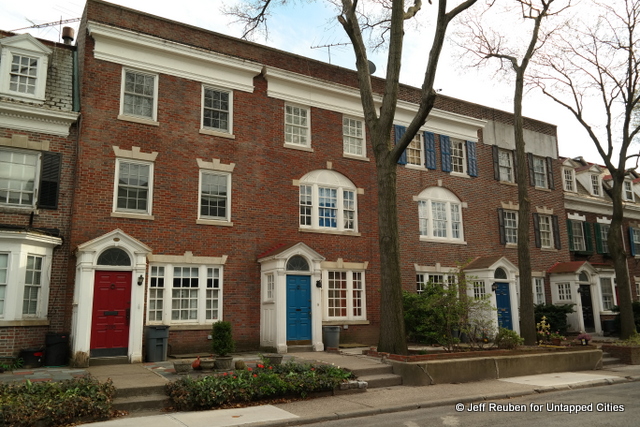
Around the same time that Martense Court was built, another cul-de-sac development of single family homes on a former estate was being developed a few blocks to the south. A total of 23 neo-Federal style single-family rowhouses were built along Albemarle Terrace during 1916-1917.
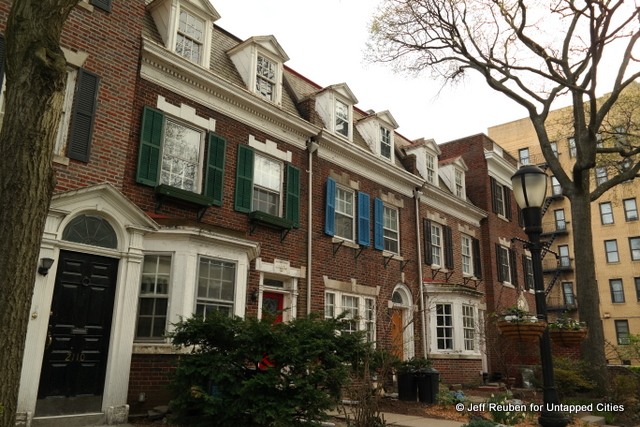
Advertisements for Albemarle Terrace promised easier upkeep than bungalow houses, such as Marlborough Court, due to the houses’ sturdy brick construction.
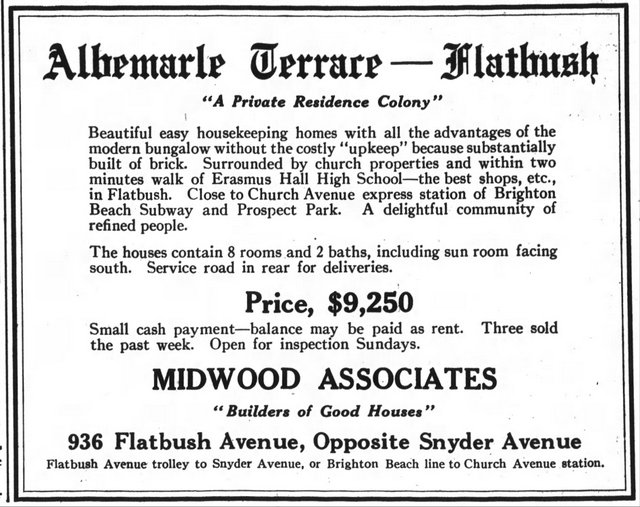 Brooklyn Life (magazine), 31 March 1917, accessed via Brooklyn Newsstand/Brooklyn Public Library
Brooklyn Life (magazine), 31 March 1917, accessed via Brooklyn Newsstand/Brooklyn Public Library
3. Kenmore Terrace
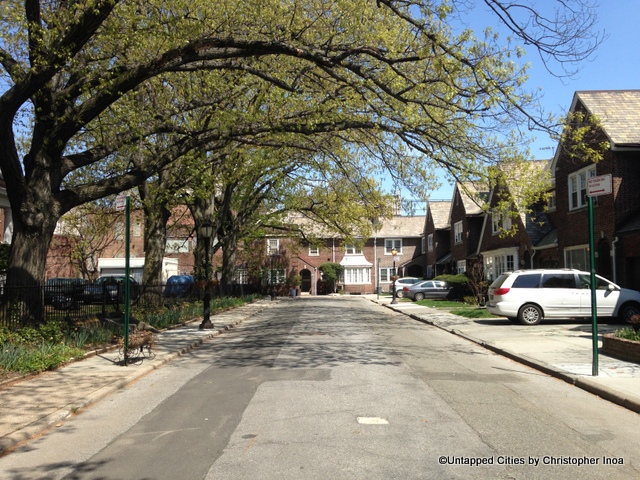
Following the development of Albemarle Terrace, the same development and architecture team built a second cul-de-sac, Kenmore Terrace, immediately to the north (both streets extend from East 21st Street which was previously known as Kenmore Place).
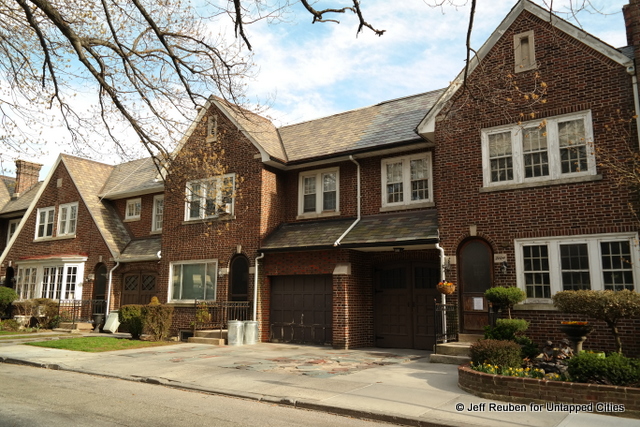
Nine houses were constructed along the south side of Kenmore Place during 1918-1920 and, unlike the Albemarle Terrace houses, most of these were built with short driveways and garages, reflecting the growing importance of automobiles for middle class homeowners.
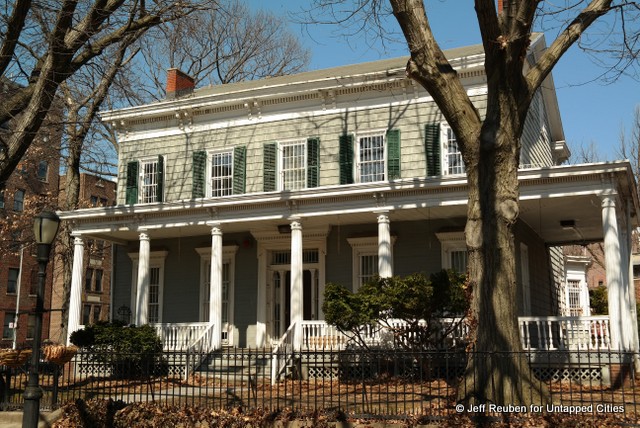
On the north side of Kenmore Terrace lies the former parsonage building of the Flatbush Dutch Reform Church. The parsonage, built in 1853 and originally located on Flatbush Avenue, was moved to this location in 1920 and is still used for church functions. Kenmore Terrace has a distinctively pastoral setting.
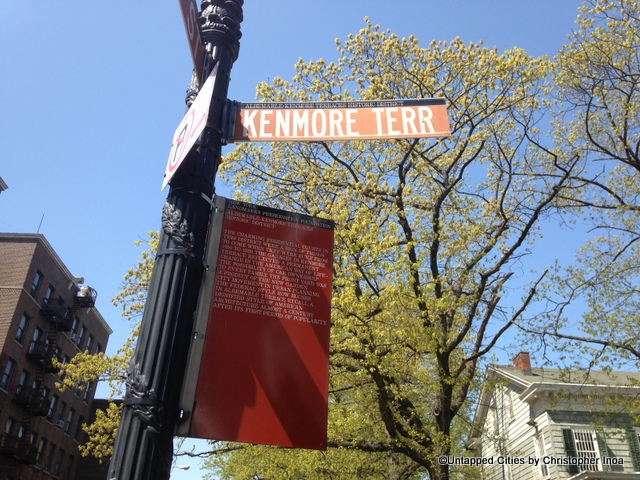
Albemarle and Kenmore Terraces form a New York City historic district, which is also listed on the State and National Register of Historic Places. For more information see Untapped Cities article on the historic district. (The parsonage is also a designated New York City Landmark and State and National Register-listed.)





